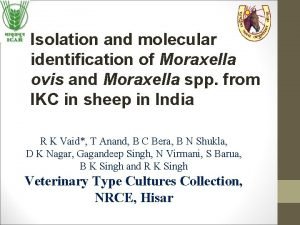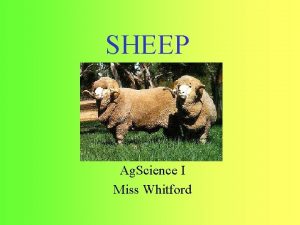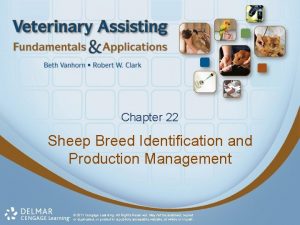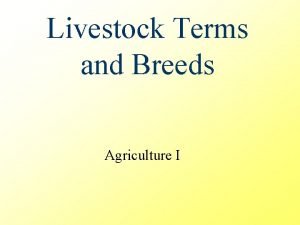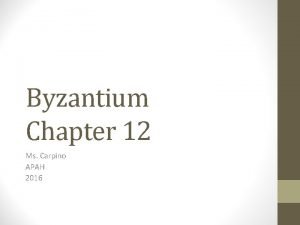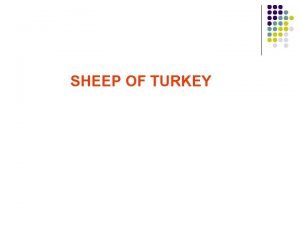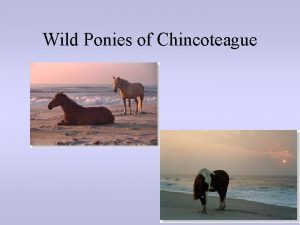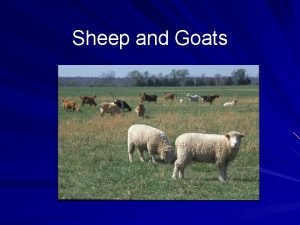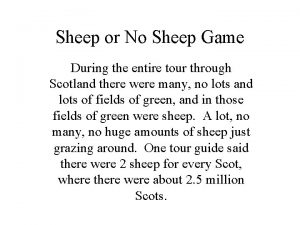ANTOLIAN WILD SHEEP OVIS GMELINII ANATOLICA ANATOLIAN WILD


















- Slides: 18

ANTOLIAN WILD SHEEP (OVIS GMELINII ANATOLICA)

• ANATOLIAN WILD SHEEP • In Anatolian Region, It is named as «Mountain Sheep» , » Rock Sheep» or «Ceran» • It is known as a member of : -family of double hoofed (Artiodactyla) -subfamily of ruminant (Ruminantia) -stockfamily (Bovidea) -family of Sheep (Ovis)

• Anatolian Wild Sheep is the family member of Asian Mouflan that is one of the five wild sheep species in the world. • It is endemic species. It is unique to Turkey. It is seen only in Turkey.

• Although it is known as the ancestor of domestic sheep, it doesn’t look like the same. • It is a smart and swift animal.

• Anatolian Wild Sheep looks like a deer more than sheep with short feathers, short ears and tail, tall and thin legs. • Its vision, scent(smelling) and auditiory sense are quite advanced.

• Females are 80 -90 cm tall and their weight is 35 -40. • The height of males is 105 -140 cm and they are 45 -75 kg.

• Its front legs are shorter than the back legs. This feature is quite helpfull for climbing the hills.

• ITS HABITAT • It lives in the Central Anatolia Region in TURKEY. • Typical habitat of Anatolion Wild Sheep is arid (rainless) and smooth hills that steppe and forest are side by side

• Nutrition (Feeding): • Steppe plants laying on the habitat is the food of Anatolian Wild Sheep. • Wild Sheep eats grasses, leguminuous seeds(bean , chick-pea, broad bean) and tubers (roots of plants) that sheep dig and take from underground. • Even they can eat plants that are poisonous for the other animals. • They have a high tolerance of dehydration(thirst).

• BIOLOGY • Its average life time(life span) is about 15 -18 years. • Female sheep has no horns. • Male sheep has horns that are out-swing(go through) to both sides and lengthen as the animal gets older. Horns appear when it is 4 months old and grow in the whole life time • In summer, its fur is a kind of yellowish-brown. This color gets darker in winter time. • Males start to breed after 4 -5 ages, a 2 year-old female sheep can breed. • A young female sheep can breed one lamb, when it gets older it has two lambs in one birth(breed) • The mating term is for two months. Males and females live together in this term.

• The pregnancy term (gestation) is approximately 5 months. • It generaly gives a birth(breed) in May or June. • The pregnant female sheep leaves the herd to breed and goes to rough places not to be reached. • It lives alone for a while, and then it comes back to the herd again. • The young lamb can run as fast as its mother two or three hours later after the birth.

• MIGRATION • Anatolian Wild Sheep do not immigrate. • It is a unique endemic species to TURKEY. It is only seen in Turkey.

• Population • According to the publisments in 1800 s, its life area consists of the mountainous district in cities; Ankara, Eskişehir, Afyon and Konya. • These animals has faced to be endangered animal species because of ; - overhunting - pressure of other hunter animals -food trouble • In 1960 s, the numbers of Anatolian Wild Sheep were under 50. • In 1966, They kept under protection in a 420 km 2 –special area. By means of these precautions, the number is over 2000 today.

• Behaviroural Features • For the Anatolian Wild Sheep , the male and female herds live seperately almost in 10 months. • Generally, males make a herd of 10 -15 bodies, females make a group of 18 -20.

• The leader of the herd is an old and experienced female sheep. • In case of danger, it warns the other sheep in the herd by hitting the ground with its foot and by making a noise just like a whistle. So it can lead its herd to a safer place.

• Male sheep herds only consist of the males that reach to the maturity. (complete the sexual development) • Wild sheep make more complex and crowded herd during the mating term (Breeeding Time) • In this term , an old female sheep undertakes the leadership

• Seasonal Behaviours • In summer time , female and male herds live apart from each other in seperate areas • They spend 8 -10 hours of the day for browsing(eating grasses and plants)

• The Anatolian Wild Sheep had been living in many areas in Turkey 50 years ago. • The reasons of over-hunting and reduction of its life areas, they became a 30/40 number of animal group only in Konya in 1967. • The first precaution/policy on protecting these animals was taken by the Ministry of Agriculture. • In Bozdağ(in Konya), the only place they have maintained their life , a protected and protecting area in 60. 000(59. 296 )hektare wideness has been established. So the number is getting higher and then. • After 2004, workings on bringing these animals to ex-life environments have been carried on. As a result of this; 172 sheep to Ankara, 61 sheep to Karaman, 20 sheep to Malatya were transported.
 Ovis equipment pvt ltd
Ovis equipment pvt ltd Moraxella ovis
Moraxella ovis Anatolian hearth
Anatolian hearth Museum of anatolian civilizations
Museum of anatolian civilizations Two voice poem examples funny
Two voice poem examples funny Mrs wild going wild
Mrs wild going wild Butch killian
Butch killian Sheep brain
Sheep brain Cheviot origin
Cheviot origin Sheep breed identification
Sheep breed identification Sheep parts
Sheep parts Herbivores carnivores omnivores scavengers decomposers
Herbivores carnivores omnivores scavengers decomposers Papillary muscles sheep heart
Papillary muscles sheep heart Circulatory system of a cow
Circulatory system of a cow Sheep eye diagram
Sheep eye diagram Dolly the sheep
Dolly the sheep What is the anterior of a sheep eye
What is the anterior of a sheep eye Saint apollinaris amid sheep
Saint apollinaris amid sheep Whats a male sheep called
Whats a male sheep called

